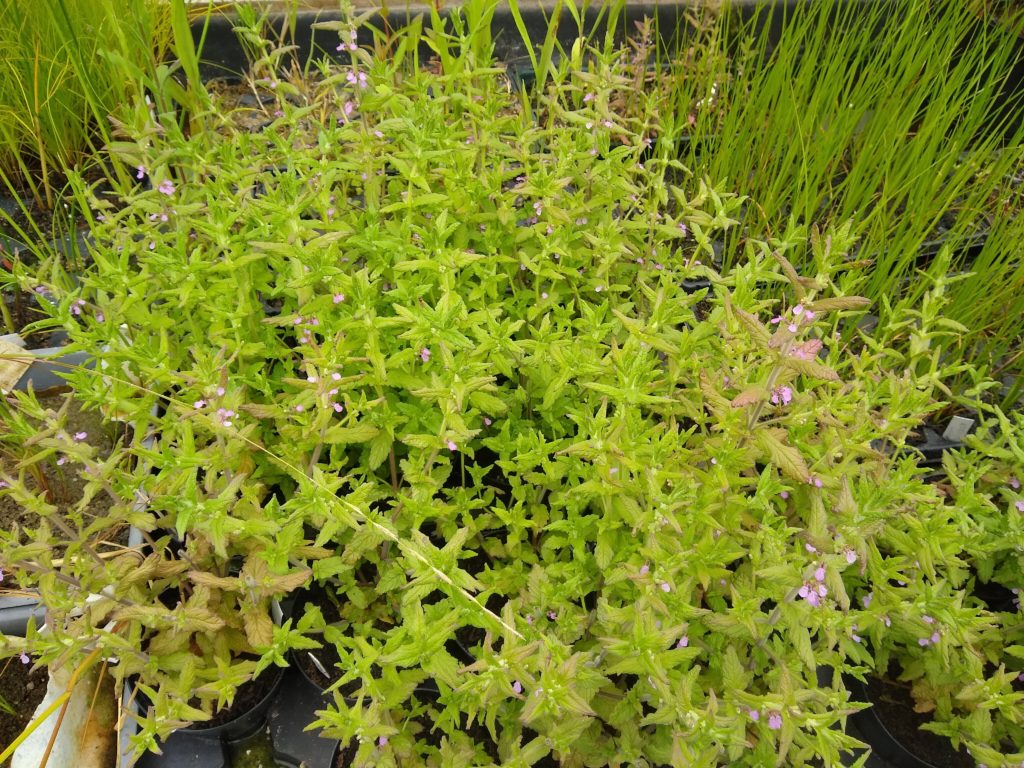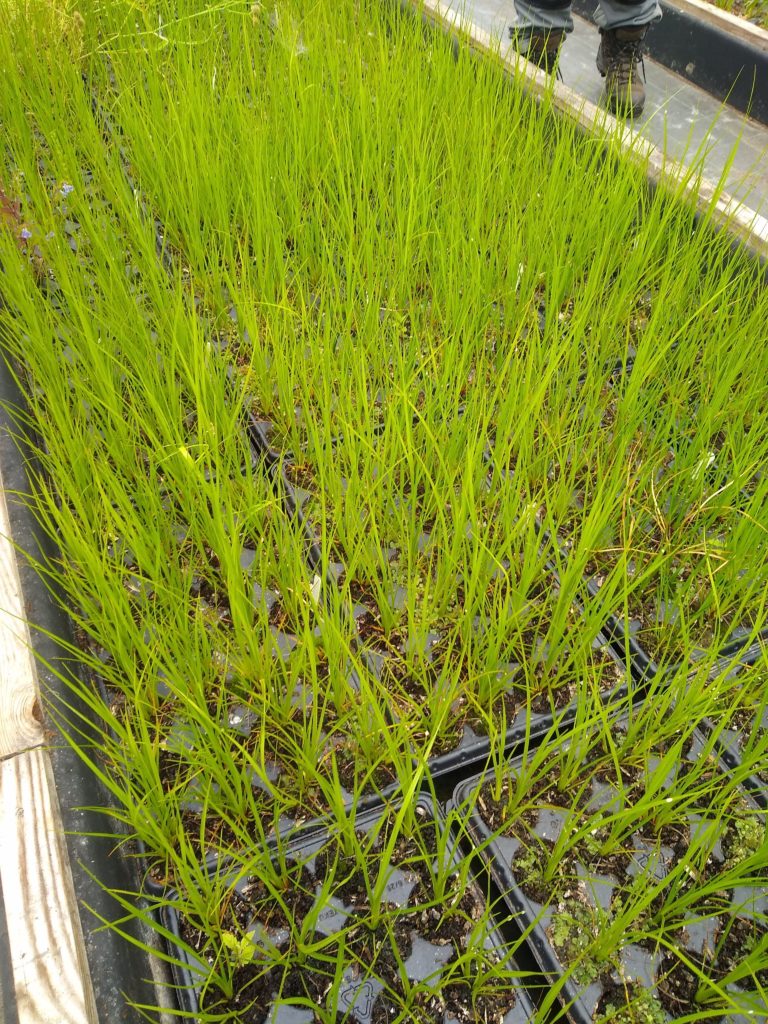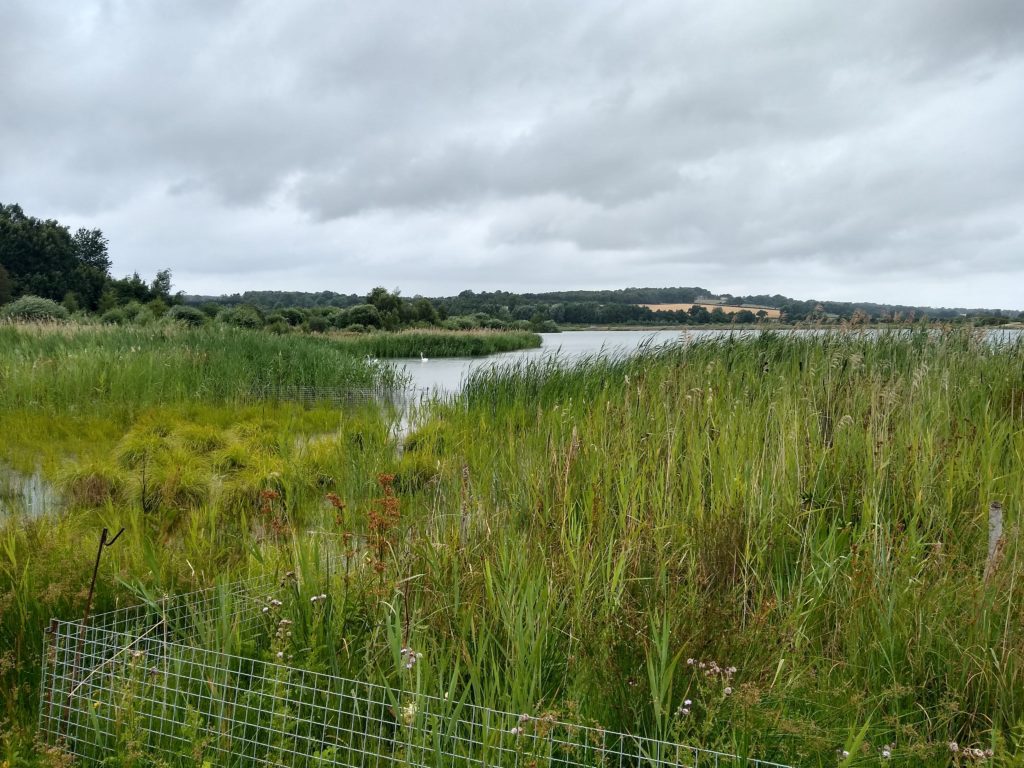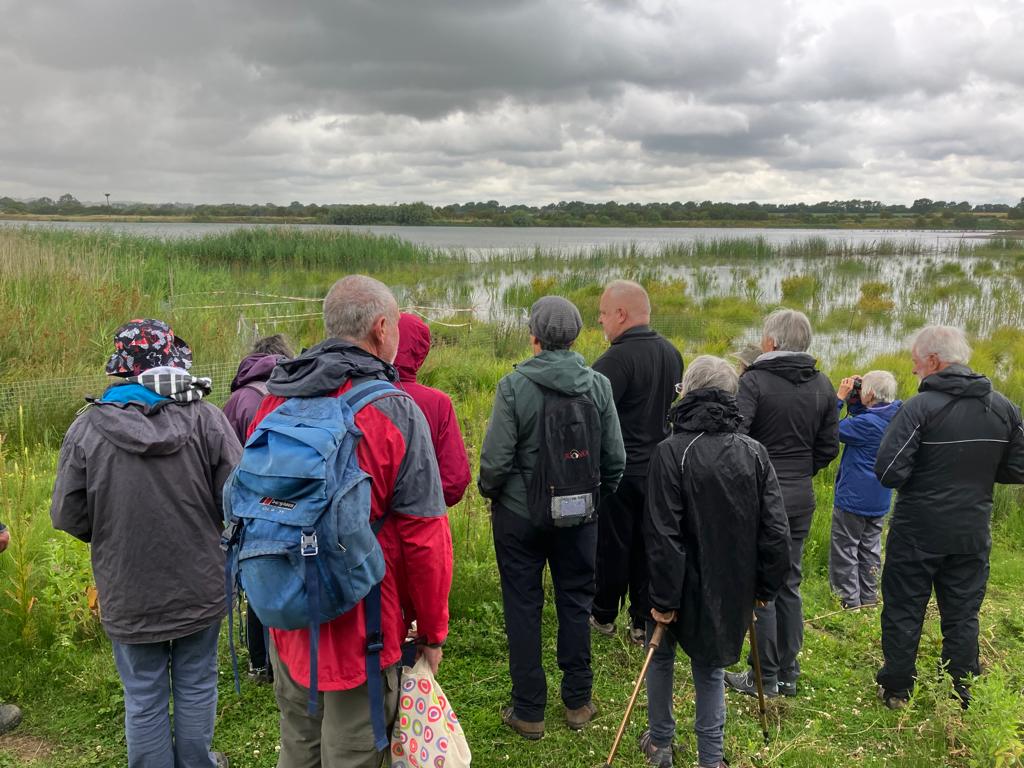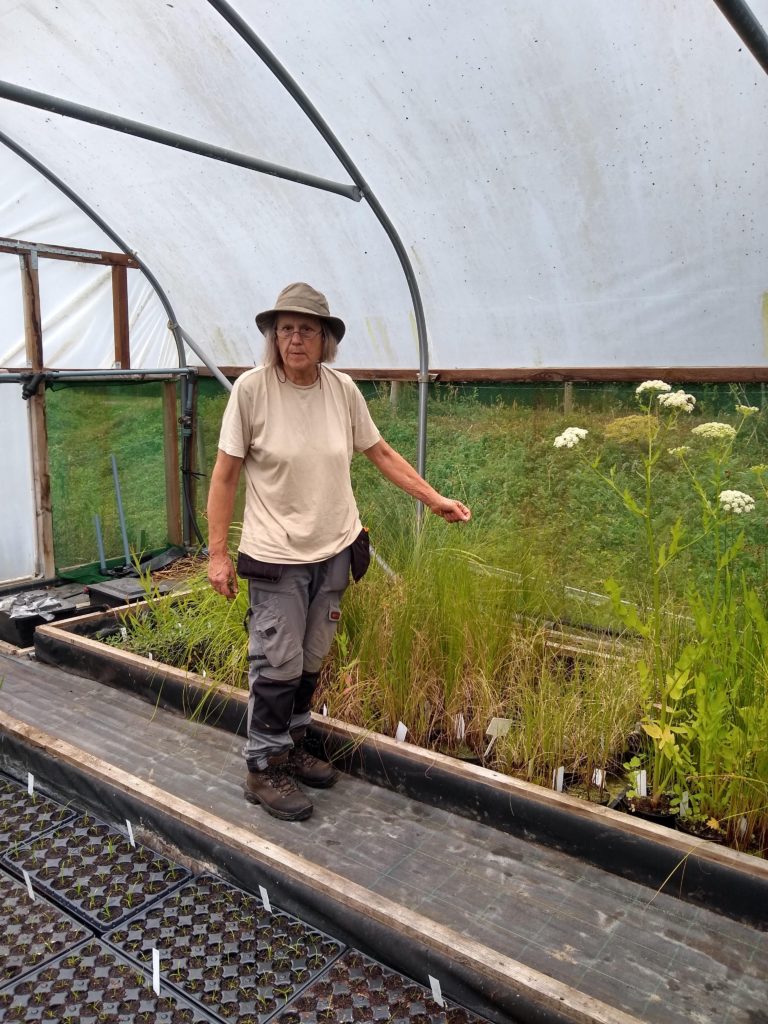It may be surprising to some people to find that there is a charity near to Ripon which is propagating hundreds of species of rare British water plants in a nursery on a former sand and gravel quarry. Last Friday afternoon ten HDNS members visited the site, and were treated to some mind-blowing information about this very specialised project. Our guides were Pan and Laurie Thoresby and Martin Hammond, the site ecologist.
Nosterfield’s plant nursery was begun by the Lower Ure Conservation Trust (LUCT) in 2018, when apparently the area was bare silt. The Trust realised that in order to fulfil its aim to conserve the biodiversity of species and their habitats, it would be necessary to begin by growing those plants which were originally found locally. One would have thought the first dilemma would be trying to establish which plants were growing there historically. Luckily though there is a rich archive of flora for the area, and so the Well Wetlands Heritage Trust project was born.
The project is a pioneering experiment to establish plants in wetland habitat using local sources of seeds and cuttings, which are grown on in the nursery. The planting scheme is based on the small surviving remnants of natural fen in the lower Ure and Swale valleys, landscapes once characterised by their wetlands, marshy commons, meres and floodplain meadows.
Our first sighting on arrival was of Flask Lake, and the rain although forecast, was holding off (hooray)! So opportunistically, our guides decided to show us the ‘outdoors’ part of their project first of all. For aged people like myself it is magical to be shown plants in real life that previously were only pictures in books for me. One of the first plants which Martin showed us was Great Fen-sedge. This is being successfully grown from seeds. Also flourishing was Tufted Sedge, which forms conspicuous tussocks. Tufted Sedge provides great habitat structure since the tussocks offer a refuge not only for terrestrial invertebrates when water levels are high, but also a humid retreat for semi-aquatic ones when the water recedes. Furthermore, the tussocks themselves store lots of carbon-rich organic matter. Other Carex species which we were shown included Bottle Sedge, Bladder Sedge and Greater Tussock Sedge.
In other areas we found amongst many others, Blunt-flowered Rush, Purple Moor-grass and Purple Small-reed. Also Skullcap, Brookweed, Water Figwort, Marsh Valerian and Devil’s-bit Scabious. Another local speciality growing on the nursery site is Tufted Loosestrife. The only native population surviving in England is found at Gormire Lake near Thirsk, but it grew formerly in a handful of other sites in the lower Swale valley.
The rain then decided to fall, so we retreated ‘indoors’ to the polytunnel to view those plants which had not yet been planted out. The first one we were shown was the rare Water Germander, although in its bed it looked very vigorous and almost commonplace. We then walked beside a whole host of plants which were growing seemingly oblivious to the fact that outside the polytunnel they would be classed as rare. A few plants such as Clustered Bellflower were being grown for planting on one of the henges close by.
It was stressed to us that this is a long-term project with the aim of establishing self-maintaining plant communities which can be managed by grazing and mowing. There are many challenges, including relatively high nutrient levels, the depredations of geese and rabbits and highly invasive New Zealand Pigmyweed (Crassula helmsii). It takes a certain level of steadfastness, patience and determination to cope with such challenges. And yet such is the strength of character of the workforce volunteers that they carry on undeterred. All credit to them.
Our thanks to Muff for organising the trip, and to LUCT and Pan, Laurie and Martin for making us so welcome. Long may their successes continue.
Sonia Starbuck
